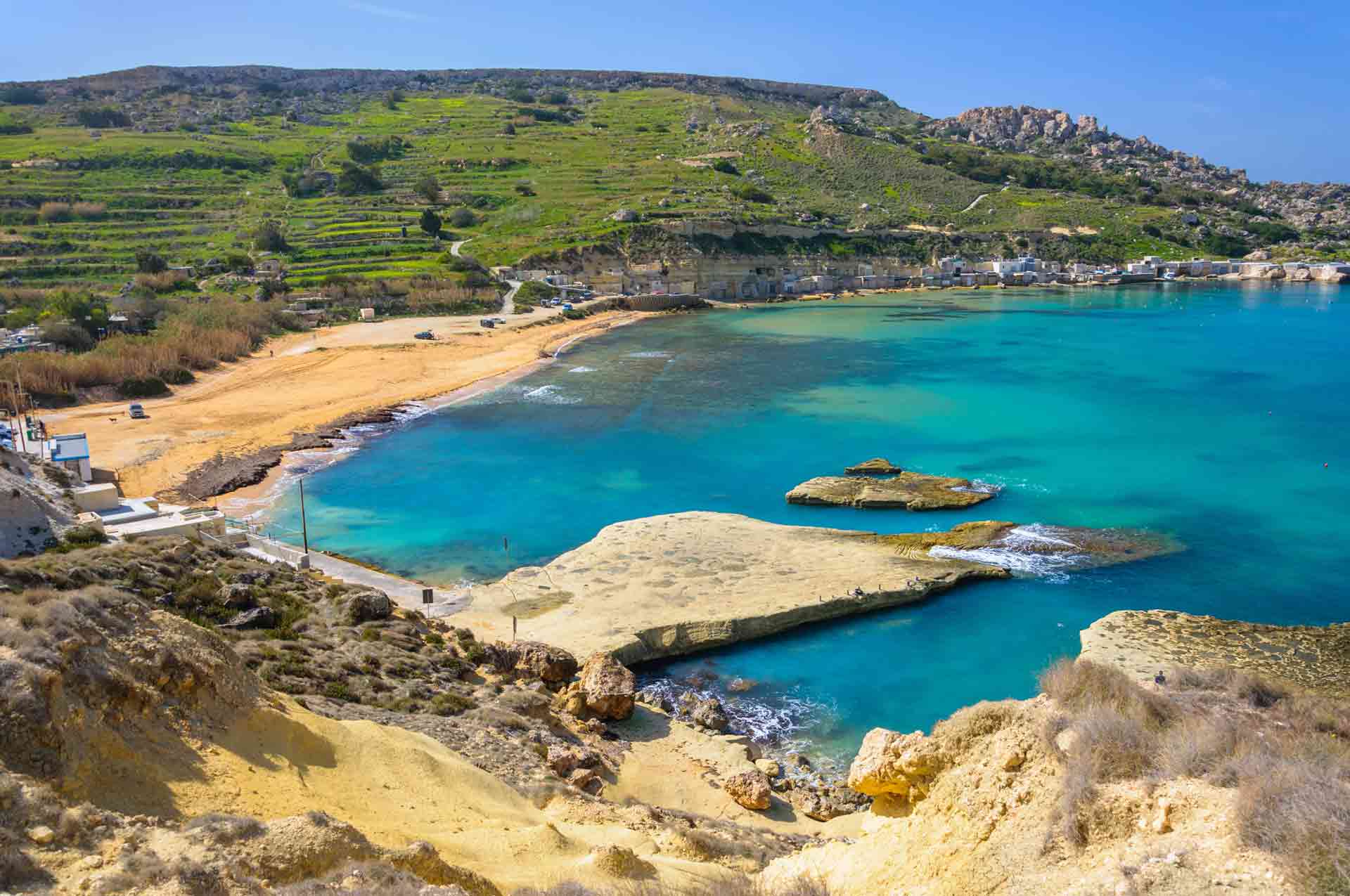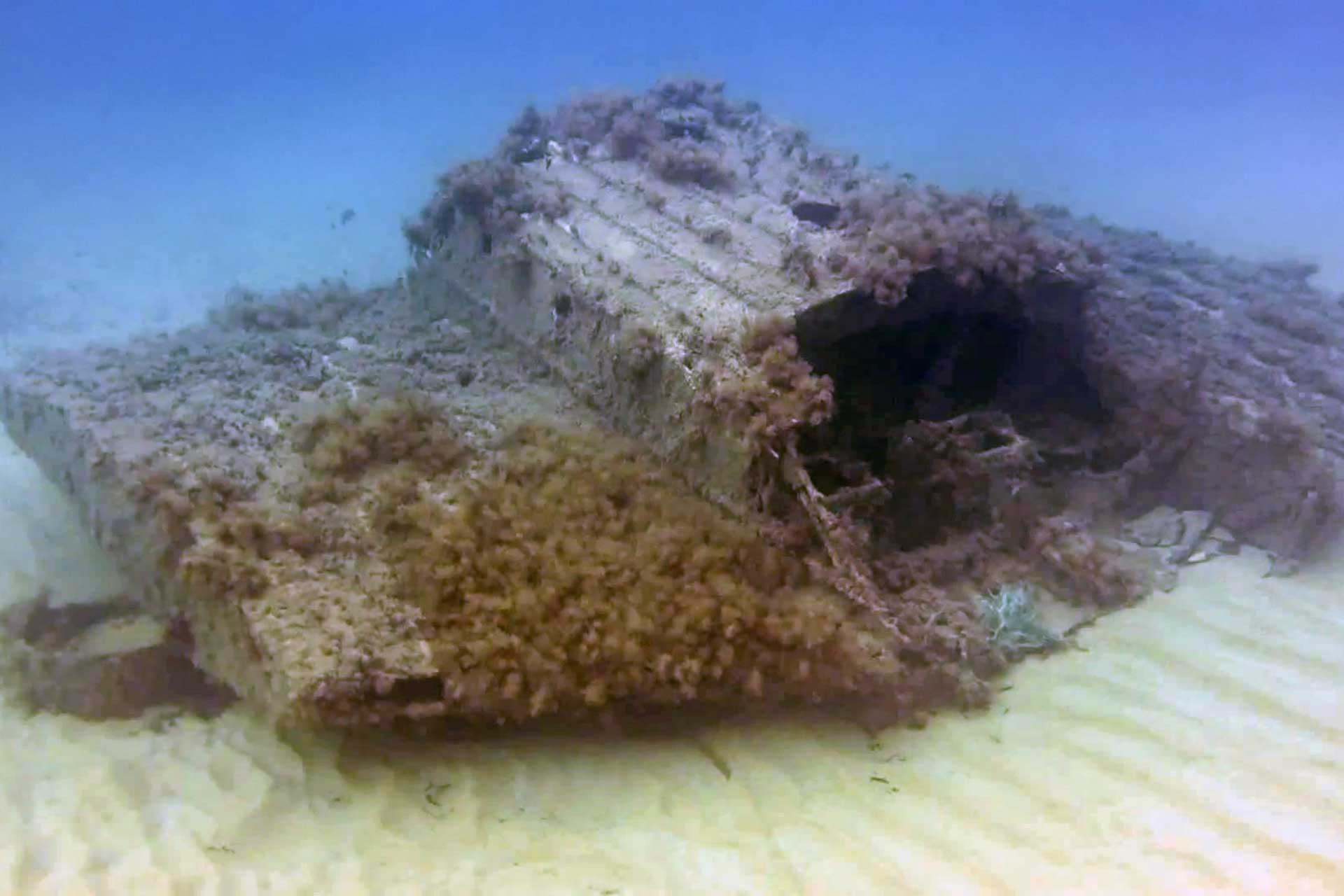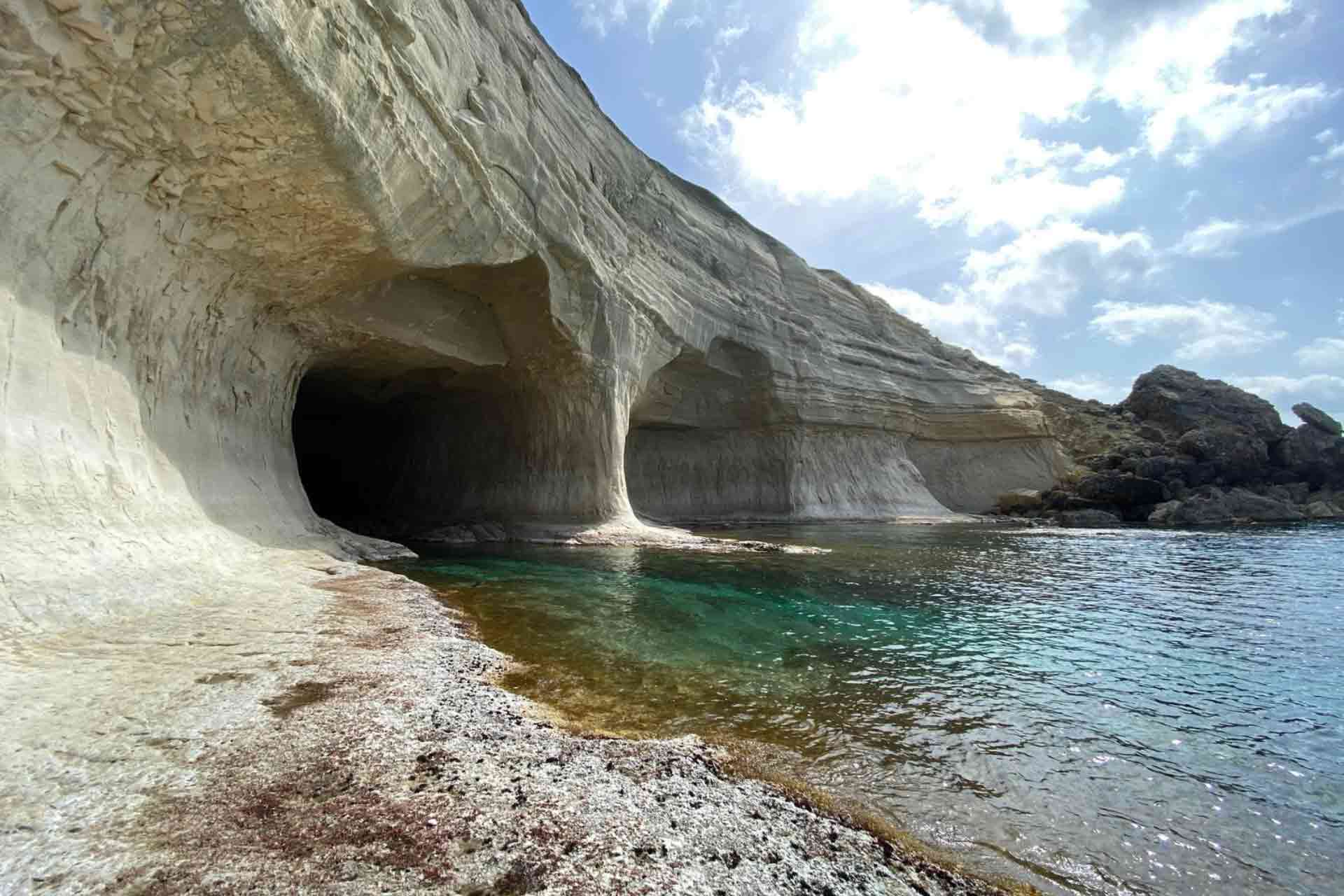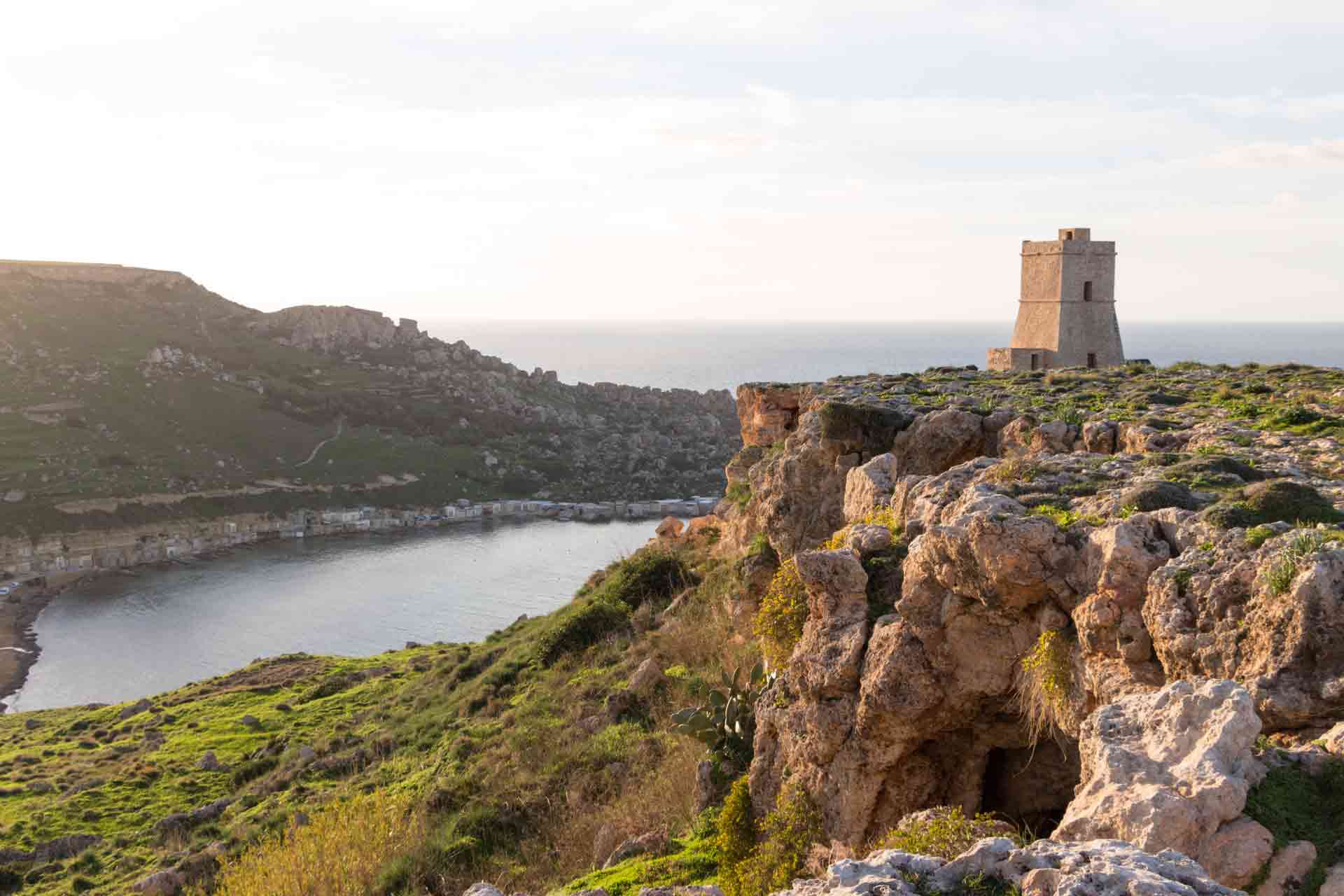Gnejna Bay: What Makes This Natural Wonder A Local Favourite
by Karl Azzopardi

Sandy or rocky beaches? — probably one of the most heated debates that islanders go through during the summer months. Thankfully, some swimming spots around Malta serve as a mediator for this never-ending dispute and Gnejna Bay is one of these godsend beaches.
Situated on the North-Western coast of Malta beyond the limits of Mgarr, Gnejna Bay is a gorgeous sandy beach for sunbathers and sand castle builders, as well as rocky areas from where one can show off their diving skills.
Here's why you should choose Gnejna Bay as your next swimming destination and how to make the most out of your visit, even after the summer months.
A Garden Full of Life, Mystery & Death
Gnejna is the diminutive term for 'gnien', the Maltese word for garden — an apt name considering the area's verdant surroundings where local flora decorates the tops of the unusual limestone formations lining the entire bay. Of course, this is more notable during the spring and early summer months when the climate in Malta is more favourable for nature to thrive. This is all thanks to the irrigation from local farmers and the perennial freshwater spring that can be found in Gnejna Valley leading to Gnejna Bay. It is one of the last remaining springs of its kind in Malta and serves as a home to the rare endemic Maltese freshwater crab — 'qabru'.

On your way to Gnejna Bay, just before heading down the Gnejna Valley, you may notice a humble palace known as Kastell Zammitello (Zammitello Palace). Its Norman architecture hints toward the late 17th century and its name recalls the surname of its original owner Baron Bernardo Zammit whose daughter is the main protagonist of a local legend — The Legend of Castello Zammitello.
His daughter, Lucia, was betrothed to an elderly, wealthy Sicilian count, however, on the eve of the wedding, she mysteriously vanished. The Baron, thinking she was kidnapped by pirates, led a search party across the lengths of Gnejna Bay but to no avail. A year later, a chorus of church bells suddenly erupted from a local church and to everyone's amazement Lucia appeared before the altar as a phantom dressed in nuns' habit. Here she shared how she left Kastell Zammitello to escape from her arranged marriage and went to tend to the wounded as a hospitable nun for the past year until she was tragically struck by a stray arrow.

Kastell Zammitello
Kastell Zammitello has remained within the Zammit family for over 200 years. The last resident was a cousin of the family, Baron Francis Sant Cassia, who in 1988 fell victim to a cold-blooded murder after being shot in the head while emerging from the premises. It wasn't until 2006 that investigations honed in on the suspected murder — a hitman commissioned to kill the Baron for reasons not yet known to this day. Despite this ominous history, Kastell Zammitello has since become a popular wedding venue due to the lavish surroundings of the Gnejna area.
What to Expect & Do
Gnejna Bay has everything you need for a proper day well spent at the beach. You can start with an ice-cold drink and a snack or two from the kiosks that welcome you to the lovely sandy beach. Here you can set up your beach equipment (also available for rent on site) and have a gradual descent into the clear blue waters or let loose on the variety of water sports and skiing rentals available.
If you are a rocky beach lover, you can opt to walk a few metres to the right where you will find a natural limestone landing that offers plenty of opportunities for high-diving. Something to note is that the use of barbeques is allowed only if you acquire a permit for it from the Mgarr Local Council.

Gnejna's sandy and rocky areas
The sea at Gnejna Bay is cleaned regularly and is generally crystal clear, making it a perfect location for snorkelers to observe the rich seabed and marine life, as well as parts of a seaplane. According to the National Aviation Museum, these remains are part of the fuselage and cockpit controls of a Dornier Wal XI which force landed in the sea in 1932 and was towed to Malta together with nine passengers and crew members.

The Dornier Wal XI remains at Gnejna Bay (source: MaltaDives)
Gnejna is also an excellent spot for hiking enthusiasts, with hiking trails that lead to beautiful views and locations in whichever direction you decide to venture into. If you choose to head to the left and track the area above the seaside houses that line the coast, known as il-Barumbara, you'll come across all sorts of local flora and limestone structures. With enough determination and a good pair of shoes, you'll find yourself at the Ghajn il-Hamien hiking area, which is just a few minutes away from Ta' Marija Cave. This natural phenomenon is truly a sight to behold with its vibrant azure waters reflecting against the stark white limestone cave walls.

The entrance to Ta' Marija Cave (source: Wikiloc)
Alternatively, you can choose to hike up the right side of Gnejna Bay known as Tal-Lippija, named after Ta' Lippija Tower — a small watchtower completed in 1637 as the first of the Lascaris towers — which still stands there to this day. From here you can bask in the breathtaking overhead views of Gnejna Bay and its surrounding beaches that you can see in the image below. This includes the secluded Ta' Babu Cove and il-Qabbara Bay characterised by mountainous clay slopes making it an ideal spot for a natural spa day. Be warned though, il-Qabbara has built a reputation for being a nudist beach, so keep that in mind if you're planning a visit!

Helpful Information
Getting there
Gnejna Bay is highly accessible by all sorts of transport. You can either use your personal car and leave it in the spacious parking area at the bottom of the valley or take one of the buses that stop here — 44, 101, 223 or 225 — depending where you're coming from. Walking or biking is possible, just be prepared for an arduous hill climb back up the valley!
Best time to visit
The ideal time to visit Gnejna Bay truly depends on what you plan to do. If you wish to swim then the spring and summer months are obviously the best times to visit, just make sure there aren't any Eastern or South-Eastern winds forecasted. You might also want to avoid going on the weekends if you seek a peaceful swim as this is when Gnejna Bay is generally packed with Maltese families, their extended relatives, their friends and probably their pets too!
For hiking, it's best to go around winter and spring so you can experience Gnejna in all its viridescent glory without running the risk of heatstroke.



